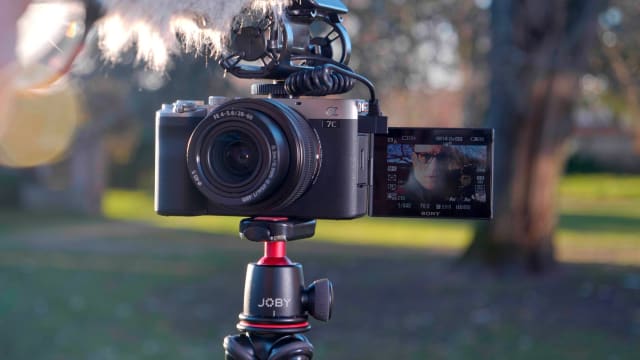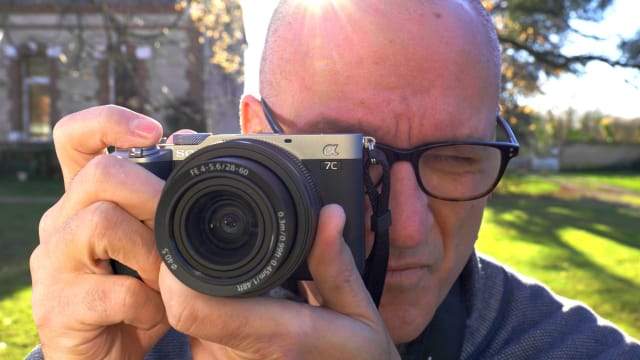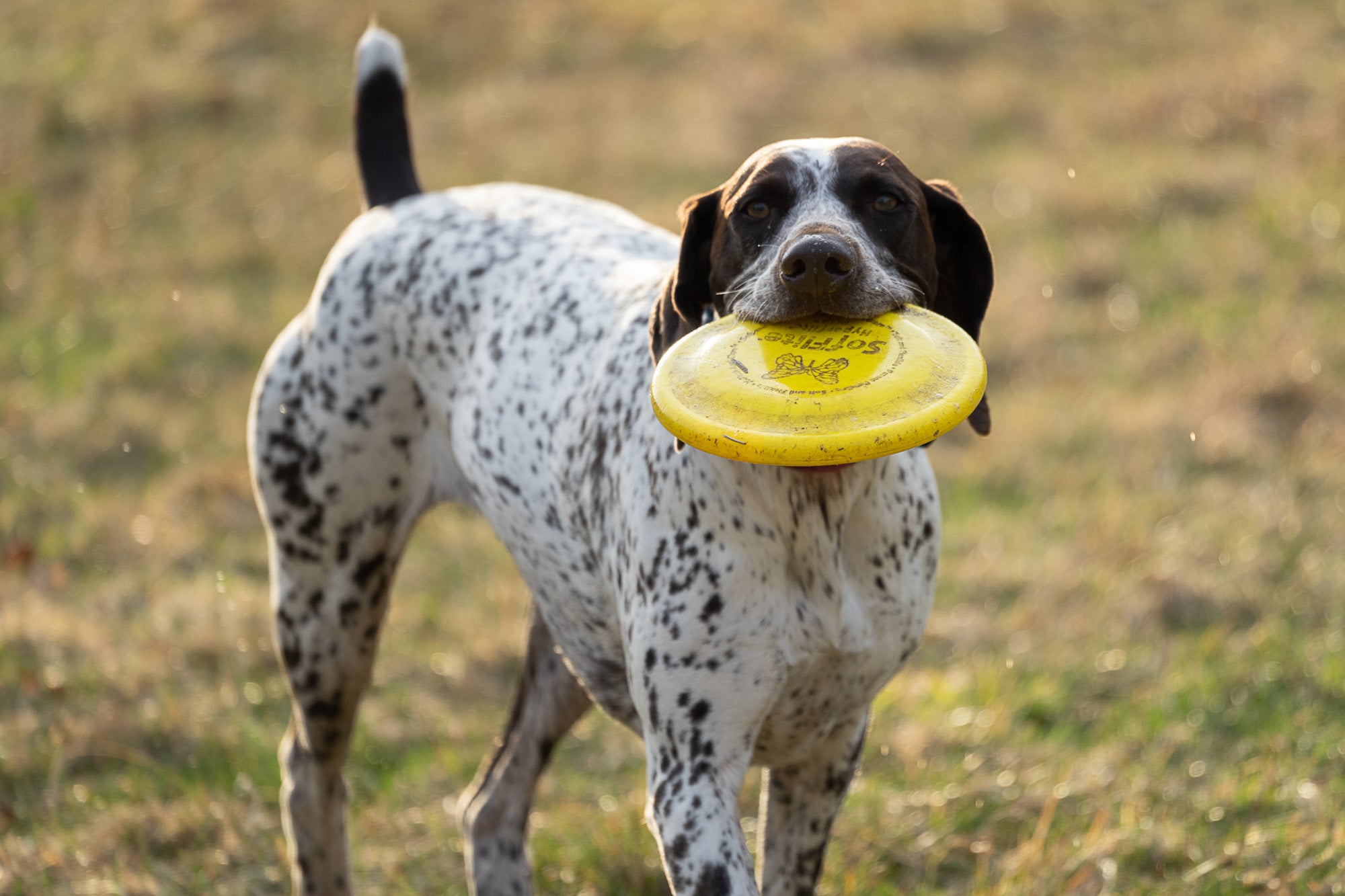Body and handling
Many folks wanted Sony to change the design of their APS-C camera to look like the more classic A7 design, but what we got was the opposite — an A7 camera that looks like the A6600. In fact, the A7C is only slightly larger than the crop-sensor A6600 and is much smaller than any other A7-series camera. It’s the world’s lightest full-frame camera at just 509 grams, compared to 650 grams for the A7 III.
With that tiny body, it was easier to carry around than the A7 III and more discreet for tourist and street photography. Keep in mind that many of Sony’s best full-frame FE lenses are heavy, bar a few like the 30mm f/2.0 model and the new 28-60mm f/3.5-5.6 kit lens. Also, to keep that body so small and light, the A7C lacks a front dial, joystick and other manual controls.
Because of that, I found I had to operate the three main dials with my thumb, which definitely slowed down my shooting. Meanwhile, the lack of a joystick meant I had to use the D-pad to change focus when looking through the viewfinder, an inelegant solution. Some of the other autofocus features help make up for that, though, as I’ll detail shortly.
You can set the focus point with the touchscreen, but it’s not very responsive. And unlike the A7S III, it doesn’t support touch for menus or any other functions. However, it does flip around and fully rotate, which makes the A7C a good vlogging camera.

Steve Dent/Engadget
It didn’t gain the much-improved menu system from the A7S III, either. Instead, Sony retained the confusing menus that I hated so much on the A7 III. With all the extra scrolling and fumbling required to find settings, you’ll want to set up the custom menus and buttons before using this camera.
Another issue that will annoy hybrid shooters is the lack of separation between photo and video modes. On other new cameras like the Panasonic S5, the Canon R6 and Sony’s A7C III, switching will change all the appropriate settings. The A7C keeps everything the same, so you’ll need to use a custom mode to keep the still and movie modes firewalled from each other.
The electronic viewfinder isn’t a strong point, either. Without a center hump like other A7 cameras, the EVF is pushed to the left corner. As a result, it’s small and lacks a decent-sized eyecup. The resolution is also not great at 2.36 million dots, compared to the 3.69 million dot EVF on Fujifilm’s cheaper X-T4, for example. It does improve on the A7 III’s EVF by doubling the refresh rate to 120 Hz, but because of the small size and wide magnification, it’s not as pleasant to use.
Sony no doubt made these tradeoffs to keep the price and size of the A7C down, which is fair enough. Luckily, there are no compromises on the battery, which is the larger NP-FZ1000 found on the A7S III and A7R IV. It can go an impressive 680 shots on a charge, pushing DSLR territory, compared to 610 for the A7 III. I also got a respectable hour and 55 minutes of 4K video shooting on a charge.
Lastly, it has just a single card slot, which isn’t ideal for pro photographers who need a backup. However, it’s located on the side and not in the battery compartment like on the A6600, thank God, and supports fast UHS II card speeds.
Performance

Steve Dent/Engadget
Since they share the same sensor, Bionz X image processor and 693-point phase-detect AF system, it's no surprise that the A7C performs much like the A7 III. To wit, it has similar 10 fps burst speeds, image quality and low-light sensitivity. However, the A7C has a few tweaks related to the buffer, autofocus performance and image stabilization.
To start with, the A7C can sustain longer bursts than the A7 III, as it has a larger buffer that can hold up to 115 RAW images, compared to 89 for the A7 III -- allowing for over 11 seconds of continuous burst shooting. It clears a bit quicker so you’re ready to shoot again sooner, too. You also get Sony’s latest AF algorithms, including the uncanny subject-tracking system found on the A7S III and other recent models.
Whether you’re tracking race cars, birds or people, once you touch to select your focus point, it stays tenaciously attached to the subject. It also works quickly and smoothly, so this camera is awesome for sports, wildlife or other action genres.

Steve Dent/Engadget
As with all of Sony’s other recent cameras, it also has face and eye tracking that’s smoother and more accurate than its rivals -- both with animals and people. While Canon greatly improved its autofocus with the R6 and R5 models, Sony’s is still a bit faster, smoother and more reliable.
The A7C has an all new five-axis image stabilization system designed to fit the A7C’s smaller body. It offers 5.5 stops of shake reduction for photos, good for shooting down to 1/15th of a second or a bit below. It doesn’t handle video as well, but more on that later.
One other small difference between the A7C and A7 III is the lack of a mechanical shutter. The A7C instead has a hybrid electronic shutter, which can sometimes cause minor artifacts with out-of-focus backgrounds at high shutter speeds. Personally, I didn’t notice any issues and I doubt the average user will, either, but purists might hate it.
So far, the A7C’s performance is on par or better than the A7 III, while the handling and controls are worse. What counts for most folks, though, is how the photos look.
Image quality
The Link LonkDecember 23, 2020 at 11:01PM
https://ift.tt/3nL7BCi
Sony A7C review: Smarter, smaller and clumsier - Engadget
https://ift.tt/2ZeUDD8
Sony

No comments:
Post a Comment